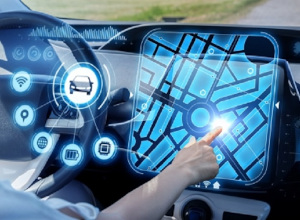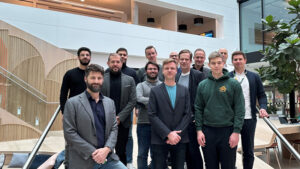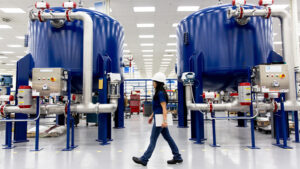
Software and electronics in the automotive industry: mapping a growing segment
The need for electrical and electronic components in the field of automotive manufacturing is set to dramatically rise over the coming decade. What do manufacturers and suppliers need to consider in this regard? This is the main topic of a recent McKinsey study entitled Automotive Software and Electronics 2030 – Mapping the sector’s future landscape, published in July 2019.

ACES trends and their effects
The ACES concept (Autonomous Connected Electrified Shared), a term particularly coined by McKinsey, aims to determine and describe the future development tasks of the automotive industry by dividing various sector trends and changes into four categories: challenges in the field of autonomous driving, with the digitalisation of road traffic and connected cars, with the development of partially or completely electric vehicles and in the area of (car) sharing models. These developments are all already changing the automotive industry and its value chains.
Market potential in figures
At the same time, the four ACES trends are key drivers of the growth forecast in the market for automotive software and electrical/electronic components (E/E), the volume of which is estimated to increase from $236 billion in 2020 to $469 billion in 2030. According to McKinsey’s experts, this makes the expected annual growth rate in this specific segment higher than in the overall automotive market (seven vs. three percent).
The transition from formerly hardware-based products to a software-based, service-driven world is particularly challenging for traditional automotive manufacturers. As a result, industry decision-makers are increasingly focussing on software and electronics so that precautions can be taken in good time.
Outlook: changes in the value chain
Whereas it basically used to be standard practice for OEMs to comprehensively define their specifications and for these to then be implemented and delivered by suppliers, the latest developments are making this approach obsolete. Neither OEMs nor suppliers have the ability to completely define the technological requirements of new systems. Even now, major manufacturers look to other countries to purchase the knowledge required, for example, for the software in self-driving cars because they do not have the necessary specialists and/or resources in the internal development department are otherwise tied up.
One key recommendation is therefore to create greater division between the development cycles for vehicles and on-board systems. OEMs and tier-1 suppliers need to appropriately adapt their technical and organisational processes and stipulate how they will develop, offer and provide functions that are as independent as possible from specific vehicle models. After all, it is about collaboratively speeding up the innovation cycles.
Not only is co-development between OEMs and suppliers expected by industry experts, but it seems to be a basic necessity with regard to software and electronics in order to remain competitive. However, partnerships with sector-independent technology providers can also work well, as proven by the strategic approach used by Microsoft and Volkswagen.
A further consequence of greater division with regard to the development and provision of hardware and software is that young technology companies can gain a foothold in the industry with their services. This results in new value creation chains with new parties that will cause major change to the dynamics of the automotive landscape and increase the complexity of the procurement process for OEMs. The good news, however, is that economies of scale can be achieved more easily than before as greater standardisation is likely to occur with regard to software. One recent example is that of the Microsoft Connected Vehicle Platform (MCVP), which can dramatically speed up infrastructure development tasks in the fields of connected cars and mobility thanks to innovative interfaces based on Microsoft Azure and the internet of things (IoT).
Question: how can you optimally prepare for the upcoming market developments?
McKinsey’s analysts thoroughly present the expected developments in their over-40-page report and have specific recommendations for the sector: to continue positioning themselves for success, OEMs should adapt their business strategies in two ways: through the careful monitoring of the ever growing tasks involved in hardware and software development plus the strengthening of more flexible, cross-functional development organisations.
The latter point is also expected to benefit tier-1 suppliers, and completely new cooperation models are conceivable in which suppliers and OEMs share the development work in order to shape the future of E/E architectures. During the implementation, they can also receive support from the new developments in the field of production management. This primarily means autonomous systems, which can, for example, become key industry technologies through the use of AI-supported robotics. In this regard, it is also possible to obtain support from major technology providers such as Microsoft, who are using dedicated initiatives to drive the evolution of artificial intelligence and machine learning.
In the case of tier-2 suppliers, further increased specialisation is to be expected due to the eruption of the classic supply channels. This will occur by the suppliers occupying attractive niches for which they scale their services, with their success based on the increasing need for innovative components that are becoming the standard in a growing number of vehicles.
Conclusion: whether focussing on core competencies or cross-player strategies, all parties will in future benefit from addressing the topic of software provision and E/E architecture modules with the aid of modern technological innovations. The cloud, big data analytics and artificial intelligence are already in place as strategic tools to this end. So do not delay… visit our portal now and find out about the range of available Microsoft solutions and future-oriented approaches for the automotive industry.




